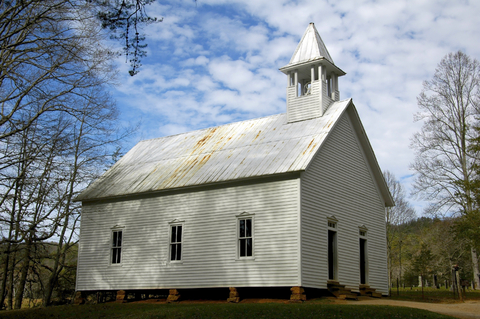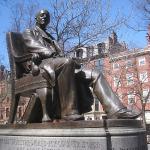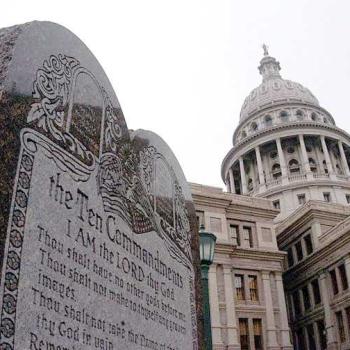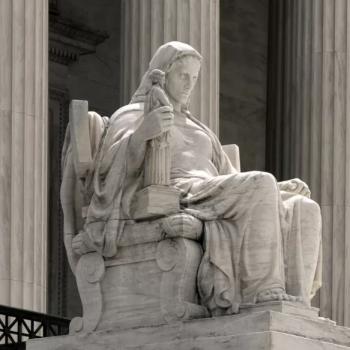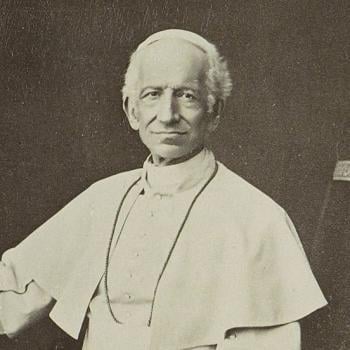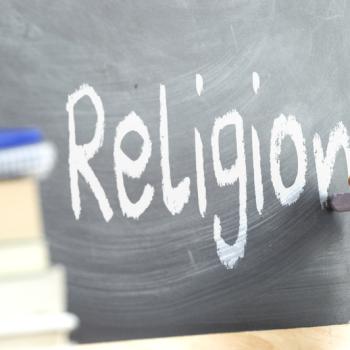In the years before the U.S. Civil War, three major Christian denominations split over slavery. These were the Baptist, Presbyterian, and Methodist. In all three denominations disagreements over the morality of slavery began in the 1830s, and in the 1840s and 1850s factions of all three denominations left to form separate groups. However, the circumstances that caused the splits were unique to each denomination.
Some background: The Atlantic slave trade that took people from Africa to be enslaved in the Americas probably began in 1526. The colonial period of North America began in the early 17th century with the British colony at Jamestown, founded in 1607. Chattel slavery was legal, and practiced, in all of the North American British colonies. But in the 17th and 18th centuries Quakers in Britain and the colonies began to argue that slavery is immoral and sinful. Some ministers of other Christian denominations joined them, as did secular proponents of the European Enlightenment. In the early 19th century the Christian revival movement called the Second Great Awakening fueled an organized movement calling for the end of slavery; see Christianity and the Abolitionist Movement in the U.S.
How Views on Slavery Depended on Money
After the American Revolution, northern states began to abolish slavery within their borders, beginning with Pennsylvania in 1780 and Massachusetts in 1783. By 1817 all northern states had either ended slavery or were committed to ending it gradually. New Jersey, for example, emancipated people born after 1805, which left a few people still enslaved in New Jersey when the Civil War began in 1861. (Note that a federal ban on slavery was considered unconstitutional, since slavery was mentioned in the U.S. Constitution. There was a broad consensus that ending slavery throughout the nation would require a constitutional amendment.)
But as slavery faded in the North it intensified in the South. As every American schoolchild knows, the invention of the cotton gin — a machine invented in 1793 that separated seeds and bolls from raw cotton — made inland cotton varieties commercially viable. In the 1800s the industrial revolution made its way across the Atlantic, but it only reached the northern U.S. The South remained steadfastly agricultural and economically dependent on cotton. For a time raw cotton made up more than half of the value of all U.S. exports.
The wealth of the South became concentrated in the hands of large cotton plantation owners, who also dominated state politics and were elected to the U.S. Congress and appointed as judges to federal courts. And the plantation owners believed with all of their being that maintaining their “way of life” depended on the institution of slavery. White southern clergy, who kept their church positions at the pleasure of plantation owners, didn’t dare say otherwise. And many southern clergy clearly shared the plantation owners’ opinions on the matter.
How Baptists Split Over Slavery
In 1789 a prominent Virginia Baptist preacher named John Leland (1754–1841) issued a widely read resolution opposing slavery. It’s safe to say that by 1840 no Virginia preacher would have dared do such a thing. By 1840 the stark difference between North and South regarding slavery had become acute. That year the the American Baptist Anti-Slavery Convention held its first meeting in New York. Until then the American Baptist Convention had been tip-toeing around the issue of slavery, but in 1840 Baptist abolitionists forced the issue into the open.
Since 1814 American Baptists had held a convention every three years, called the Triennial Convention, to plan foreign missions to Asia, Africa, and South America. And for years the Triennial Convention avoided the slavery issue. But at the 1843 Triennial Convention the abolitionists on the mission board rejected slave owners who applied to be missionaries, saying that slave owners could not be true followers of Jesus. This caused Baptists from slave states to break off and form the Southern Baptist Convention in 1845. This would be a permanent break. Today the Southern Baptist Convention is the largest evangelical denomination in the U.S.
How Presbyterians Split Over Slavery
Before the slavery issue came to a head there already was a split between “Old School” Presbyterians and “New School” Presbyterians over revivalism and other points of contention. In the 1840s and 1850s disagreements over slavery and abolition began to sew divisions in both the New School and Old School. The New School split apart completely along North-South lines in 1857.
The Old School Presbyterians managed to hang together until the Civil War began at Fort Sumter in April 1861. In summer 1861 the Old School Presbyterians issued a resolution calling for members to support the federal government. The resolution tried to soften the issue by saying that no one had to support “any particular administration, or the peculiar opinions of any particular party.” But the resolution did call for preservation of the Union under the U.S. Constitution. Southern Old Schoolers did not agree, and left.
In the South, New and Old schoolers together eventually formed the Presbyterian Church in the Confederate States. After the Civil War this was renamed to Presbyterian Church in the United States. Meanwhile Old and New Schoolers in the North had formed the Presbyterian Church USA. Presbyterianism in the U.S. smacked into other issues and formed other divisions (and unions) in the years to come, but these were unrelated to slavery.
How Methodists Split Over Slavery
The Methodist Episcopal Church (MEC), founded in 1784, was the oldest and largest Methodist denomination in the U.S. From its beginning it had a strong abolitionist streak. John Wesley (1703–1791), the English cleric who founded Methodism, was an outspoken opponent of slavery. Wesley called the slave trade the “execrable sum of all villainies.”
Even so, New World Methodists debated the relationship between the Church and slavery where it was legal. At first the general conferences proposed that at the very least clergy and church elders who owned slaves should free them, or should promise to free them, except in places where manumission was illegal. By 1808 the denomination had just about given up trying to steer the faithful away from slavery. As with the rest of the country, over time a rift grew, with northern Methodists opposing slavery and southern Methodists either supporting it or, at least, advising the Church to not take a stand that would alienate southern members. In 1843 some pro-abolition Methodists who were tired of the church’s attempt at neutrality left to form the anti-slavery Wesleyan Methodist Church.
The denomination fell apart in 1844 when it was learned that a Georgia bishop, James O. Andrew, legally owned a number of slaves. He hadn’t bought them but inherited them, he said in his defense. And many of the slaves really belonged to his wife, not to him. And then he offered to resign. But the 1844 general conference, held in New York, fell apart over the issue of what to do about Bishop Andrew. After six weeks the conference voted, finally, to ask Bishop Andrew to desist from serving as a bishop. Southern churches split away and formed the Methodist Episcopal Church, South, in 1845, The two churches remained separate for nearly a century.
Postscript
This was not quite the end of the division for the Methodists. In 1860 a group of Methodists in New York felt the northern Methodist Episcopal Church still wasn’t abolitionist enough and broke away to form the Free Methodist Church. This caused the 1860 MEC general conference to declare that owning other human beings is “contrary to the laws of God and nature” and inconsistent with the church’s rules. Churches in border states protested. They wanted the church to return to a more neutral stance. Some churches in Maryland broke away from the MEC. Churches in Missouri and Kentucky divided into pro- and anti-slavery camps.
In 1939, the Methodist Episcopal Church reunited with a couple of the southern breakaway factions to form the Methodist Church. And then in 1968, the Methodist Church merged with the Evangelical United Brethren Church to form the United Methodist Church.
